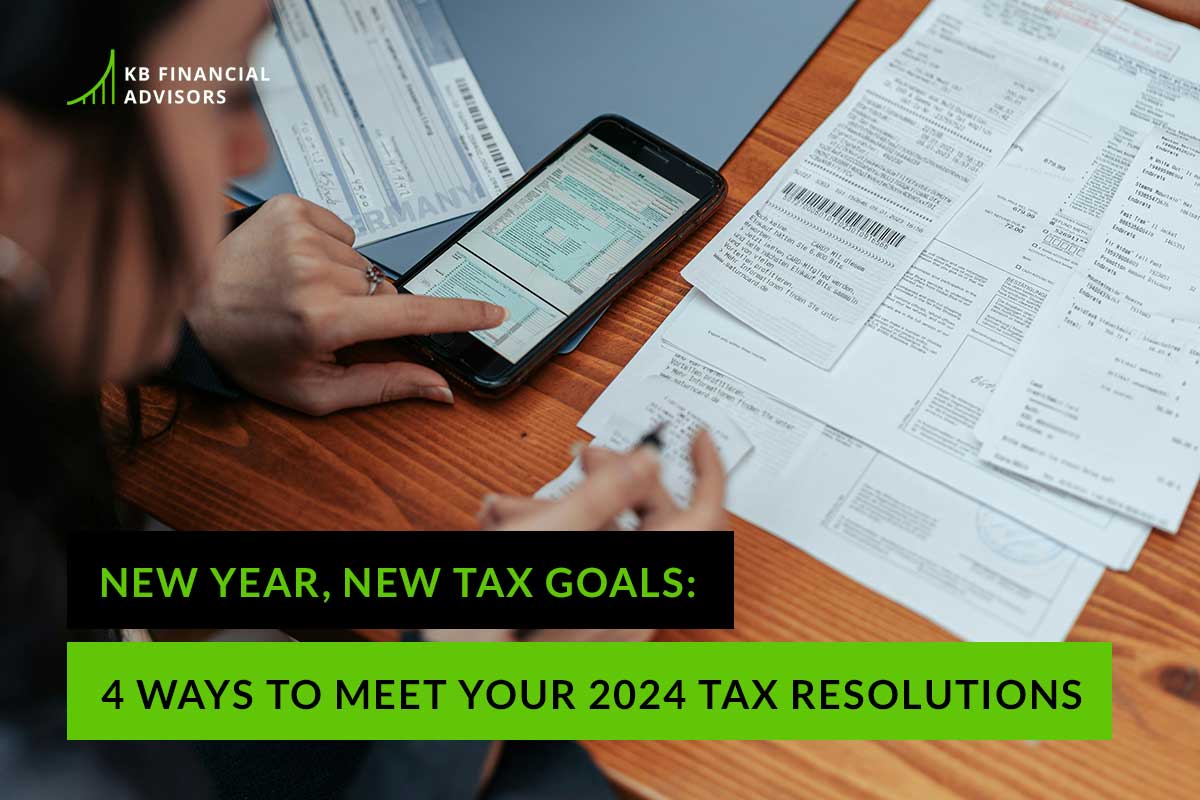Close out your 2023 taxes and set yourself up for a prosperous 2024 with these tax tips.
Now that we’ve entered a new year, you’re probably gearing up for a smooth tax season…right?
Oh, just me? That’s awkward.
You’re probably focused more on new workout regimens, hairstyles, travel goals, and so much more. But consider making mental room for new tax goals
It doesn’t have to be hard. I even made you a simple checklist to help get you started.
Here are four ways you set yourself up for your smartest tax year yet:
1. Close out the 2023 tax year
Your fourth quarter estimated tax payment is due on January 15, 2024. This is your last payment for the tax year 2023. Making the payment will help you close out your tax year while mitigating tax penalties and interest for underpayment.
You probably won’t receive your tax documents until mid-February but don’t forget that you still need to work with your tax preparer (that’s me!) to file your annual tax retur
2. Check your tax withholdings
When you change employers, you will complete a new Form W-4. However, updates to withholdings tend to fall off our radar when we’re established with an employer. Form W-4 establishes your federal and state income tax withholding. Withholdings levels are important as they help mitigate large tax balances due with your return. The new year is a good time to look at these settings and update any that may be out of line.

To make things easy, the IRS offers a nifty online tool to check your withholding.
Arguably though, your best move is working with a tax preparer. The nice thing about checking with a professional is that we consider outside factors including your equity compensation and commissions that have set withholdings rates of 22%. Now, if you’re considering joining us or are already a client, you can just send me a quick email and I’ll respond within two business days with my recommendations. They’re great recommendations, if I do say so myself.
3. Update your employer deferrals
Year to year, the IRS adjusts the annual contribution amounts for pre-tax deferral items. But, your payroll provider may not automatically update your deferrals to the new limits.
That being said, it’s especially important to evaluate your retirement plan contributions, as these are both great tax savings and investment vehicles.
Here are some 2024 limits to be mindful of:
- 401(K): $23,000
- Health savings account (HSA): $4,150 (self only), $8,300 (family)
- Health care flexible spending account (FSA): $3,200
- Dependent care FSA: $5,000
While you update your deferrals, take a look at your general benefits. It’s a good time to evaluate your benefits to ensure you’re leveraging all the tools at your disposal. Some employers offer deferred compensation plans, after-tax 401(K)s, and other useful investment vehicles.
4. Contribute to your IRAs
You have until your tax return is due to fund your retirement accounts for 2023. You can also get a jump start on your 2024 contributions at the same time.
In 2023, you were able to contribute $6,500 to IRAs. In 2024, this amount has increased to $7,000. For individuals who are over the age of 50, the catch-up limit for both years is $1,000.
Be mindful of the income thresholds as you contribute to your IRAs, as there are traditional and Roth options. The amounts below are the complete income phase-out limits. However, you have a prorated phase out of the contributions leading up to the income limits denoted.
2023 income limits for traditional IRA contributions are:
- Single: $83,000
- Married: $136,000
Note: If one spouse is not covered by an employer plan, the income threshold for married couples increases to $228,000.
2024 income thresholds for traditional IRA limits are increased to:
- Single: $87,000
- Married: $143,000
Note: If one spouse is not covered by an employer plan, the income threshold for married couples is increased to $240,000.
2023 income limits for Roth IRA contributions are:
- Single: $153,000
- Married: $228,000
2024 income thresholds for Roth IRA limits are increased to:
- Single: $161,000
- Married: $240,000
A traditional IRA contribution lets you take a deduction against your gross income for the contribution amount. However, distributions later in life are taxable.
On the other hand, a Roth IRA contribution allows you to contribute after-tax dollars to the plan, making the growth and funds tax-free upon withdrawal.
It’s important to note that high earners have a strategy called the back door Roth IRA that allows them to put funds into retirement vehicles. Here’s how it works: You essentially make a non-deductible IRA contribution and then immediately convert the contribution to a Roth IRA. Your tax preparer and financial advisor can help you complete this strategy tax-free, if done correctly.
Here’s to a tax-smart 2024
Follow these steps and voila! You’re entering the new year with peace of mind.
Now keep in mind I’m an accountant, so my primary focus is taxes. Our advisors have a bunch of other financial tips and tricks up their sleeves, including budget updates, exercising options, cash flow planning, investment goals, plan updates, and so much more.
Our clients can email us at any time and schedule an unlimited support call with their financial advisor. I know you have some burning questions, so get in touch!
New to KB Financial Advisors? Book a call today to make 2024 your smartest financial year yet.



